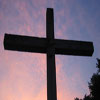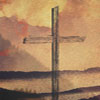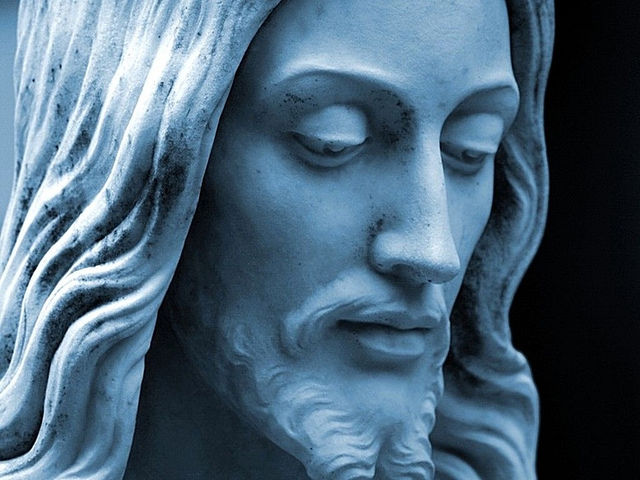 The Swoon Theories
The Swoon Theories
From the September 1928 issue of The Review of Religions. A compilation of various views and opinions from scholars of the 18th to 20th centuries on Jesus(as) surviving the Crucifixion, going into a coma and being resuscitated through healing herbs.
The following eminent scholars hold that Jesus Christ did not die on the Cross. We give their versions of the story in the words of Dr. Schweitzer as far as possible – (Ed.:“R.R.”)
Karl Bahrdt (1741-1792)
Karl Friedrich Bahrdt was born in 1741 at Bischofswerda. He died in 1792.
Bahrdt finds the key to the explanation of the life of Jesus in the appearance in the Gospel narrative of Nicodemus and Joseph of Arimathea. They are not disciples of Jesus, but belong to the upper classes. What role, then, can they have played in the life of Jesus, and how did they intercede on his behalf? They were Essenes.
In the end the piece is staged to perfection. Jesus provokes the authorities by his triumphal Messianic entry. The unsuspected Essenes in the Council urge on his arrest and secure his condemnation – though Pilate almost frustrates all their plans by acquitting him. Jesus, by uttering a loud cry and immediately afterwards bowing his head, shows every appearance of a sudden death. The centurion has been bribed not to allow any of his bones to be broken. Then comes Joseph or Ramath, as Bahrdt prefers to call Joseph of Arimathea, and removes the body to the cave of the Essenes, where he immediately commences measures of resuscitation…In the cave the most strengthening nutriment was supplied to him. “Since the humours of the body were in a thoroughly healthy condition, his wounds healed very rapidly, and by the third day he was able to walk, in spite of the fact that the wounds made by the nails were still open.”
The Order of the Essenes “had set itself the task of detaching the nation from its sensuous Messianic hopes and leading it to a higher knowledge of spiritual truths. It had the most widespread ramifications, extending to Babylon and to Egypt. They must find a Messiah who could destroy their false Messianic expectations.”
Karl Venturini (1768-1849)
Karl Heinrich Venturini was born at Brunswick in 1768. His life was blameless and his personal piety beyond reproach. He died in 1849.
Venturini’s fundamental assumption is that it was impossible, even for the noblest spirit of mankind, to make himself understood by the Judaism of his time, except by clothing his spiritual teaching in a sensuous garb calculated to please the Oriental imagination, “and, in general, by bringing his higher spiritual world into such relations with the lower sensuous world of those whom he wished to teach as was necessary to the accomplishment of his aims…” The raisings from the dead were cases of coma…But Jesus did not succeed in destroying the old Messianic belief with its earthly aims. The hatred of the leading circles against him grew, although he avoided everything “that could offend their prejudices.”…In full conclave of the secret society it was resolved that Jesus should go up to Jerusalem and there publicly proclaim himself as the Messiah. Then he was to disabuse the people of their earthly Messianic expectations. Jesus was suddenly arrested and put to death. Here, then, the death is not, as in Bahrdt, a piece of play-acting, stage-managed by the secret society. Jesus really expected to die, and only to meet his disciples in the eternal life of the other world. But when he soon gave up the ghost, Joseph of Arimathea was moved by some vague premonition to hasten at once to Pontius Pilate and to make a request for his body. He offers the procurator money.
…“A tender embrace from his wife rewarded the noble deed of the Roman, while Joseph left the Praetorium, and with Nicodemus, who was impatiently awaiting him, hastened to Golgotha.” There he received the body; he washed it, anointed it with spices, and laid it on a bed of moss in the rock-hewn grave. From the blood which was still flowing from the wound in the side he ventured to draw hopeful augury, and sent word to the Essene brethren. They had a hold close by, and promised to watch over the body. In the first four and twenty hours no movement of life showed itself. Then came the earthquake. In the midst of the terrible commotion a Brother, in the white robes of the Order, was making his way to the grave by a secret path. When he, illumined by a flash of lightning, suddenly appeared above the grave, and at the same moment the earth shook violently, panic seized the watch, and they fled. In the morning the Brother hears a sound from the grave: Jesus is moving. The whole Order hastens to the spot, and Jesus is removed to the Lodge. Two Brethren remain at the grave – these were the “angels” whom the women saw later. Jesus, in the dress of a gardener, is afterwards recognised by Mary Magdalene. Later, he comes out at intervals from the hiding-place, where he is kept by the Brethren, and appears to the disciples. After 40 days he took his leave of them: his strength was exhausted. The farewell scene gave rise to the mistaken impression of his Ascension.
Heinrich Gottlob (1761-1851)
Henrich Eberhard Gottlob Paulus was born in 1761.
In the case of Jesus, as in that of others, the vital spark would have been gradually extinguished had not Providence mysteriously effected on behalf of its favourite that which in the case of others was sometimes effected in more obvious ways by human skill and care. The lance-thrust, which we are to think of rather as a mere surface wound, served the purpose of a phlebotomy. The cool grave and the aromatic unguents continued the process of resuscitation, until finally the storm and the earthquake aroused Jesus to full consciousness.
Karl Hase (1800-1890)
Karl August von Hase; born in 1800.
This is the first attempt by a fully equipped scholar to reconstruct the life of Jesus on a purely historical basis…The keynote of the work is rationalistic, since Hase has recourse to the rationalistic explanation of miracles wherever that appears possible.
A stringent proof that death had actually taken place cannot, according to Hase, be given, since there is no evidence that corruption had set in, and that is the only infallible sign of death. It is possible, therefore, that the resurrection was only a return to consciousness after a trance. But the direct impression made by the sources points rather to a super-natural event. Either view is comparable with the Christian faith.
“Both the historically possible views – either the Creator gave new life to a body which was really dead, or that the latent life re-awakened in a body which was only seemingly dead – recognise in the Resurrection a manifest proof of the case of Providence for the cause of Jesus, and are therefore both to be recognised as Christian, whereas a third view – that Jesus gave himself up to his enemies in order to defeat them by the bold stroke of a seeming death and skilfully prepared resurrection – is as contrary to historical criticism as to Christian faith.”
Friedrich Schleiermacher (1768-1834)
Schleiermacher’s “Life of Christ” appeared in 1864… He admits on an equal footing, as conception of the resurrection of Jesus, a return to consciousness from a trance-state, or a super-natural restoration to life, thought of as a resurrection.
“All that we can say on this point,” he concludes, “is that even to those whose business it was to ensure the immediate death of the crucified, in order that the bodies might at once be taken down, Christ appeared to be really dead, and this, moreover, although it was contrary to their expectations, was a subject of astonishment. It is no use going any further into the matter since nothing can be ascertained in regard to it.” Schleiermacher’s own opinion is, what really happened was re-animation after apparent death.
Charles Hennell (1809-1850)
Charles Christian Hennell, a London merchant, withdrew himself from his business pursuits for two years in order to make the preparatory studies for his “Life of Jesus.” He is best known as a friend of George Eliot. (To the same category as Hennell’s work belongs the Wohl Geprufte Darstellung des Lebens Jesu.) An account of the life of Jesus based on the closest examination of the Heidelberg mathematician, Karl von Langsdorf, Mannheim, 1831.
Jesus, according to his narrative, was the son of a member of the Essene Order. He entered on his public ministry as a tool of the Essenes, who after the Crucifixion took him down from the cross and resuscitated him.
These “Disclosures” only preserve the more external features of Venturini’s representation…The problems which Venturini had intuitively perceived were not solved either by the Rationalists, or by Strauss, or by Weisse. These writers had not succeeded in providing that of which Venturini had dreamed – a living purposeful connection between the events of the life of Jesus… Venturini’s plan, however fantastic, connects the life of Jesus with Jewish history and contemporary thought much more closely than any other life of Jesus, for that connection is, of course, vital to the plot of the romance.
Salvator
One of the most ingenious of the followers of Venturini was the French Jew, Salvator. In his “Jesus Christ et sa doctrine” (Paris, 1838), he seeks to prove that Jesus was the last representative of a mysticism which, drawing its nutriment from the other Oriental religions, was to be traced among the Jews from the time of Solomon onwards…After he had lost consciousness upon the cross, he was succoured by Joseph of Arimathea and Pilate’s wife.
August Gfrörer (1803-1861)
August Friedrich Gfrörer; born in 1803, died in 1861.
The saying in John V.24, “He that heareth my word, and believeth on Him that sent me, hath eternal life and cometh not into judgment; but is passed from death into life,” is the only authentic part of that discourse…Jesus did not believe that he himself was to rise from the dead. Nevertheless, the “resurrection” is historic; Joseph of Arimathea, a member of the Essene Order, whose tool Jesus unconsciously was, had bribed the Romans to make the crucifixion of Jesus only a pretence, and to crucify two others with him in order to distract attention from him. After he was taken down from the cross, Joseph removed him to a tomb of his own hewn out for the purpose in the neighbourhood of the cross, and succeeded in resuscitating him.
Paul André Desjardins (1838-)
According to Paul de Regla (“Jesus von Nazareth,” translated from the French into German by A. Just, Leipzig, 1894; the author, whose real name is P. A. Desjardins, is a practising physician), Jesus himself when taken down from the cross was not dead and the Essenes succeeded in reanimating him.
Emile Lerou
Pierre Nahor’s (Emile Lerou) “Jesu” translated from the French by Walter Bloch, Berlin, 1905. (Ed. Nahor was the pseudonym used by Lerou)
On the cross he put himself into a cataleptic trance; he was taken down from the cross seemingly dead, and came to himself again in the grave.
The motto of this book is, “The figure of Jesus belongs, like all mysterious heroic or mythical figures, to legend and poetry.”
Nikolas Notovitch (1858-)
Nikolas Notovitch (“La Vie inconnue de Jésus Christ”, Paris, 1894. Germany, Stuttgart, 1894) finds in Luke i.80, “a gap in the life of Jesus,” in spite of the fact that this passage refers to the Baptist, and proposes to fill it by putting Jesus to school with Brahmins and Buddhists from his 13th to his 29th year. As evidence for this he refers to statements about Buddhist worship of a certain Issa which he professes to have found in the monasteries of Little Tibet.
George Moore (1852-1933)
“The Brook Kerith”, by an Irish novelist (1916).
The masons of Joseph (of Arimathea) related to him “that Jesus of Nazareth had been tried and condemned by Pilate that morning. And is now hanging on a cross, atop of Golgotha, said one of the masons…Be careful to speak no word in his favour, and make no show of sympathy, else a Zealot’s knife will be in thy back before evening, for they be seeking the Galileans everywhere, at the priest’s bidding…he rode up the ascent at a gallop in the hope that he might be in time to save Jesus’ life. He knew Pilate would grant him almost any favour he might ask; but within fifty yards of the crosses his heart began to fail him, for, whereas the robbers were straining their heads high in the air above the crossbar, Jesus’ head was sunk onto his chest. He died a while ago, the centurion said, and as soon as he was dead, the multitude began to disperse, the Sabbath being at hand…he did not dare to deliver up the body of Jesus without an order from Pilate…‘Pilate will not refuse his body to me’, Joseph replied …The unwillingness of the centurion was reduced to naught at the mention of a sum of money…There is no reason for my not giving up the body, Pilate answered… ‘tempted by the money that Joseph proffered, he allowed Jesus to be laid on the ox-cart, and Mary, Martha and Joseph following it reached Mount Scropas, in which was the tomb, before sunset. Jesus was laid on the couch beneath the arch…he looked round the sepulcher and perceived it to be a small chamber with a couch at the farther end of it…God did not save him in the end as he expected He would, he continued; he’d have done better to have given Pilate answers whereby Pilate would have been able to save him from the cross…He was overcome by desire to see his dead friend once more,…as he approached the couch on which the body lay he stopped; the colour went out of his face; he trembled all over; the sheet which Martha and Mary had drawn over the face was fallen, and Joseph lifted a long tress of hair so that he might better see Jesus. He must have moved, or angels must have moved him; and, uncertain whether Jesus was alive or dead, Joseph remembered Lazarus, and stood watching, cold and frightened, waiting for some movement. He is not dead! He is not dead! He cried, and his joy died, for on the instant Jesus passed again into the darkness of swoon. And Joseph, having no water to bathe his forehead with, nor even a drop to wet his lips, said: There is none nearer than my house. I shall have to carry him thither in my arms…The gardener’s cottage is empty; I will carry him thither… The truth cannot be kept from Esora. I need her help: I can depend upon her to cure Jesus of his wounds…But he had done well to refrain from closing the sepulcher with the stone, for the story of the resurrection would rise out of the empty tomb, and though there were many among the Jews who would not believe the story, few would have the courage to inquire into the truth of a miracle; and with a faint smile on his lips, he began to wonder what the expression would be on the faces of Martha and Mary when they came to him on the morrow with the news that Jesus had risen from the dead…They cried: He’s risen from the dead! The sepulcher is empty…Are we to tell what we have seen? Seen! Said Joseph. Forthwith both began to babble about a young man in a white raiment. His counsel to them was neither to spread the news nor to conceal it. Let the apostles, he began – but Martha interrupted him by saying: They are all in hiding, in great fear of the Pharisees, who have power over Pilate, and he will condemn them all to the cross, so they say, if they do not escape at once into Galilee. But since we can vouch that we found the stone rolled away and a young man in white garments in the sepulcher, we are uncertain that they may not take courage and delay their departure, for they can no longer doubt the second coming of the Lord in his chariot of fire…Those that have already gone will return, Mary answered;… Then thou believest Jesus to be risen from the dead…Yes, I believe that Jesus lives … The highest I have met among men, Joseph interposed,…His is that, and maybe there’s no better in heaven; after God comes Jesus, on earth as he will be in heaven… But if Jesus were to go to India we should never see him again, she answered.
Dr. Elsie Morris
Dr. Elsie Louise Morris, of 229 Alexandria Street, Los Angeles, in making copies of rare books and manuscripts in the Library of the Christian Israelites’ about 1904, came across the MSS copy of a Letter (published in 1919) of the Essene Elder in Jerusalem to his brother Elder in Alexandria, in which the Eye-Witness states as follows:
“Joseph and Nicodemus examined the corpse, and greatly moved, the latter, pulling Joseph aside, said, ‘As sure as I know anything about organical life and nature, as sure it is possible to save him.’ But Joseph did not understand him, and he advised us not to tell John anything of what we had heard. Indeed, it was a secret which was to save our brother from death. Nicodemus shouted, ‘We must immediately have the corpse with its bones unbroken, because he may still be saved’; then conceiving his want of caution, he went on in a whisper, ‘saved from being famously buried.’ He persuaded Joseph to set aside his own interests, to save their friend by immediately going to Pilatus and prevailing upon him to allow them to take Jesus from the cross that very night and put him in the sepulcher, hewn in the rock close by, and which belonged to Joseph.”
“My dear brethren, I will let you know that Pilate often sold the bodies of the crucified to their friends, that they might bury them. And the centurion was friendly to me, as he had conceived from the events that Jesus was an innocent man. When the two thieves were beaten by the soldiers with heavy clubs, and their bones broken, the centurion went by the cross of Jesus, saying to his soldiers, ‘Do not break his bones, for he is dead.’”
“For Pilate had a great reverence for Joseph, and secretly repented of the execution. When Nicodemus saw the wound, flowing with water and blood, his eyes were animated with new hope, and he spoke encouragingly, foreseeing what was to happen. He drew Joseph aside to where I stood, some distance from John, and spoke in a low, hurried tone, ‘Dear friends, be of good cheer, and go to work. Jesus is not dead; he only seems to be because his strength was exhausted. While Joseph was with Pilate I hurried over to our colony, and fetched the herbs that are useful in such cases. But I advise you not to let John know that we intend to reanimate the corpse of Jesus, for I fear he could not conceal his joy; and dangerous indeed would it be to let the people know it, as our enemies would then put us to death, as well as him.’”
“Now thirty hours had passed since the assumed death of Jesus. And when the brother heard a slight noise in the grotto, and stepped in to watch what would happen, he smelt a strange odour in the air, as is natural when the earth is going to vomit fire. And the youth saw with untold joy that the corpse moved the lips and breathed. He hastened to assist him, and heard slight sounds rise from his breast, the face assumed a living appearance, and the eyes opened and gazed astonished at the novice of our order.”
“Nicodemus, who was an experienced physician, said on the road, that the peculiar atmosphere prepared in the air by the revolution of the elements was beneficial to Jesus, and that he never had believed that Jesus actually was dead, and he spoke of, that the blood and water that flowed from the wound was a sure sign that life was not extinct.”
Dr. B F Austin
Dr B. F. Austin, of Los Angeles, says:
“There is absolutely nothing in the truthful story of the Crucifixion to render the death of Jesus on the cross a necessity. In the first place, only the hands were pierced, as we learn on the best authority. The suffering and danger from loss of blood and pain from the hand wounds was very much lessened by the custom of binding the arms very tightly to the cross, partially stopping the blood circulation and benumbing the pain by pressure upon the nerves. Those crucified in other lands were allowed to remain on the cross till death resulted naturally from the crucifixion, and in some cases, we are told, survived for a week after the infliction of the penalty. Jesus, a sensitive, that is peculiarly a sufferer, after the flogging and burden-bearing, naturally swooned under the pain of crucifixion. There is no mention in the ‘Letter’ of any wound in the feet, or any healing treatment applied thereto.”
“If Jesus were, therefore, as the ‘Letter’ states, a member of the Order of the Essenes, and befriended as far as the rules of the Order would allow any public activities in apparent opposition to the State, by members of his Order, what is more natural to suppose than that he was shielded from having his bones broken by the soldiers, and his body carefully laid away in the sepulchre of another Essene and, by arts of healing well-known to the Order, restored to consciousness and to active life again?”
“The actual flowing of water and blood from the wound in the side is a great physiological proof that life was not extinct in his body at that time.”
Thanks to Roberto Gaeton for finding this article to share.





